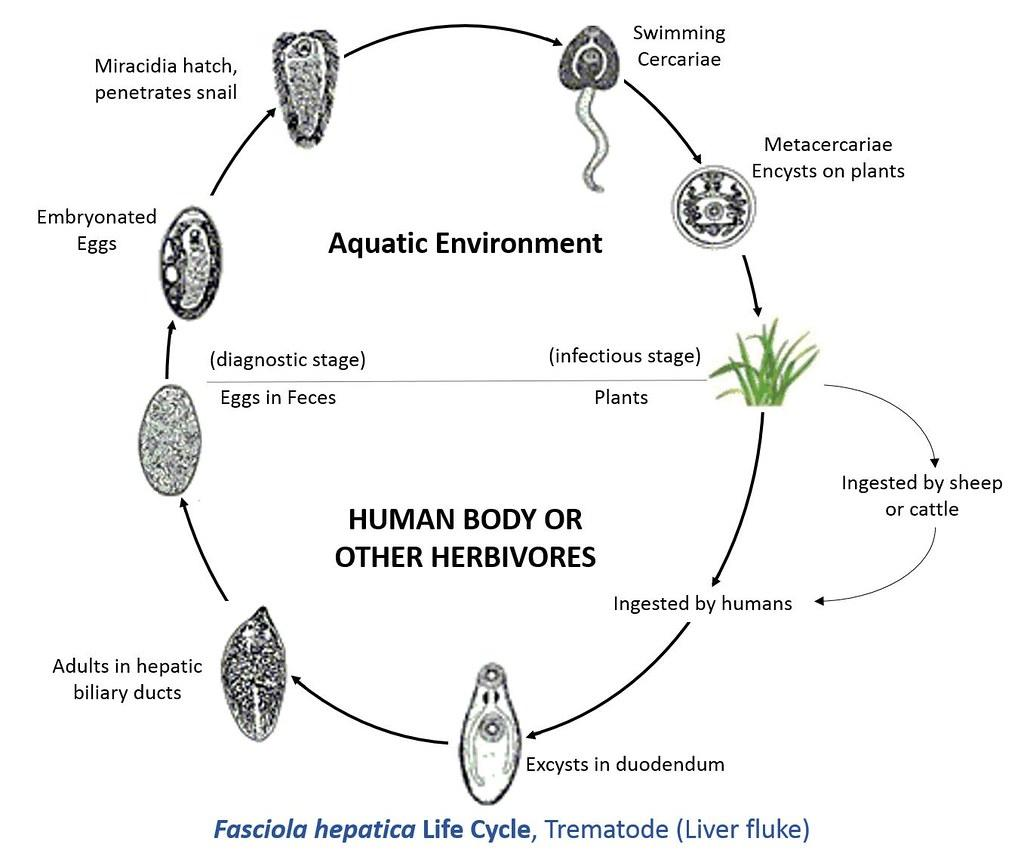Question
Question: Which one of the following sets is the correct sequence of larval stages in the life cycle of Fascio...
Which one of the following sets is the correct sequence of larval stages in the life cycle of Fasciola?
(A) Sporocyst- redia- metacercaria- cercaria and miracidium
(B) Miracidium- cercaria- sporocyst- redia- metacercaria
(C) Miracidium- sporocyst- redia- cercaria- metacercaria
(D) Cercaria- metacercaria- redia- sporocyst- miracidium
Solution
Fasciola hepatica is a parasitic trematode of the class Trematoda, phylum Platyhelminthes. It contaminates the livers of different warm-blooded creatures, including people. It is otherwise called the regular liver fluke or sheep liver fluke.
Complete answer:
The sickness brought about by this Fasciola fluke is called fascioliasis or fascioliasis, which is a sort of helminthiasis and has been delegated as a dismissed tropical disease. Fascioliasis is named as the plant/food-borne trematode contamination, frequently occurring through eating the parasite's metacercariae encysted on plants. Miracidia are pyriform motile larval stages which are around 150−200m long and are provided with the cilia.
Sporocyst are pleomorphic sac-like bodies which are about 0.3−1.5mm that possess germinal cells which produce the embryo. The developed cercariae about 0.5mm long and are free-swimming gymnocephalus stages with straight club-molded tails, which are in this manner shed when they encyst on vegetation to form metacercariae about 0.2mm in diameter. Hence at first miracidium takes place and after that sporocyst and redia and then cercaria and metacercaria takes place.

Hence, the correct answer is Option (C).
Note: Fasciola hepatica has the nearest relatives, which are Fasciola gigantica. These two flukes are considered as the sister species since they show numerous similar morphological characters and can mate with one another to produce their offspring.
